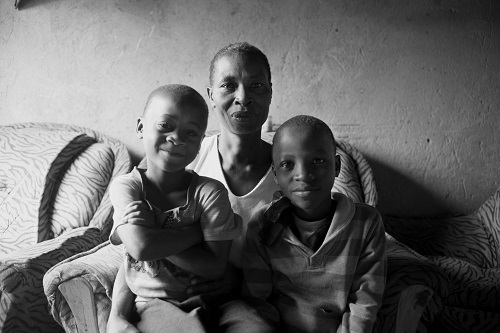Difference between Adoption and Fostering
Adoption and foster care can sometimes seem rather similar, but they in fact have very significant and fundamental differences. When someone, in most cases a child, is adopted, that means that all the rights and benefits of being that person’s parent will be transferred to another person or couple.
The family that will adopt a child can be chosen directly by the original parents of that child, so they can choose a family they think will suit their child’s future needs best. Once the child is adopted, that situation becomes permanent, and the child’s adopters become his/her permanent parents. In some cases, the child is allowed to have some connection with its biological parents, although that is a rare occasion – usually the child won’t find out it’s been adopted until it’s become an adult.
Foster care, on the other hand, is a much more rigorous system, in which a child is placed into the care of “foster parents”, where the role of foster parents can take an organization such as a ward or a group home. In special cases a child might fall under the care of a state-certified caregiver, in which case the situation is most similar to an adopted child. There is still one significant difference – a foster parent is paid weekly for his/her job, whereas parents that adopted a child only receive support from a social services department that placed the child under their care, which is rarely comparable to the pay of a foster parent.
In other words, fostering is a full-time job, while adoption is a one-time process that lasts throughout the lifetime of the child and involves much more emotional connection between the adoptee and the new parents than between foster parents and the child.
What is Adoption?
Adoption is a process in which one person or couple presumes the role of parenting of another person, most often a child, and therefore transfers all the legal rights and benefits of being that child’s parent from the child’s biological parents.
In almost every case, before the adoption takes place, child’s biological parents will do a lot of research in order to find a family they think will perfectly fit their child and that will raise him in a manner they think is right.
An interesting fact is that, during 2017, a vast majority of adopted children were under the age of 2. This is widely considered the optimal age for adoption, since the child will hardly remember that it had different parents before.
After the adoption takes place, the child rarely reconnects with its biological parents. The family that adopted it becomes its true family in every aspect except the biological one. In some cases, the family might let the child know it has been adopted when it reaches certain age, but that depends on the family and their attitude towards doing that.
There are, in fact, terms that describe adoptions with these different relationships between the adopted person and his/her biological parents – the open and closed adoption, where open adoption is the one where the connection is preserved and the closed, or confidential adoption is the one where no ties between the child and its family remain.
- A process in which all legal rights are transferred from the biological to the adoptive parents
- Technically, a person of any age can be adopted, but, most commonly, children under the age of 2 are adopted
- The biological parents can choose the adoptive parents
- Usually, no contact between the biological parents and their child is preserved
What is Fostering?
Fostering, or foster care, can be regarded as a job, in the sense that the person or people that are taking the role of being foster parents to a child receive weekly income for taking care of the child. Throughout the years, this has proven to be an incentive for people to exploit children and the role of being foster parents in order to earn money the easy way. However, in the recent years the number of such cases has drastically decreased.
There are various systems that can be regarded as foster care. Wards, group homes, or orphanages are great examples. There is, of course, the option of having a single person take the role of the foster parent, in which case he must be a state-certified caregiver. This situation is when fostering is most similar to adoption.
Another important point is that preserving the relationship between the adoptee and his/her biological parents is actually encouraged, either by exchanging letters or photographs and other multimedia. Usually, when the child turns 18, it leaves the foster care system and becomes independent and without any support.
Difference Between Adoption and Fostering
-
Legal rights in Adoption and Fostering
In the case of adoption, the adopting parents will take all the legal responsibilities, rights and benefits from the child’s biological parents, and the child will lose its biological surname and inheritance rights. Fostering is quite the opposite, there is next to no legal rights transmission, and the child gets to keep its biological surname and inheritance rights.
-
Connection with parents in Adoption and Fostering
In most cases, an adopted child will lose all contact with its biological parents, whereas a foster child is even encouraged to keep and preserve the connection with its original family.
-
Payments on Adoption and Fostering
Adopting parents receive only slight support from the social services department, and that doesn’t even apply in all countries, while the foster parent or caretaker receives weekly payments that are sufficient to support all the expenses necessary when raising a child.
Adoption vs. Fostering: Comparison Chart
| Adoption | Fostering |
| All the legal rights are transferred from the biological to the adopting parents | Only the most basic responsibilities and rights are transferred to the foster care organization or individual |
| The child almost always loses its connection to its biological parents from a young age | The child is encouraged to preserve its relationship with its family |
| The adopting parents sometimes receive support from the social services department | The caretaker or foster parent receives weekly payments |
Summary of Adoption and Fostering
- Adopting is a process in which all legal rights, responsibilities and benefits connected to having a child are transferred to the adopting parents
- Foster care is more of a job, where the foster parent or an organization take care of the child until it turns 18
- An adopting parent only receives support from the social services department, while the foster parent receives weekly payments
- Adopted children rarely keep a connection to their biological families, while children under foster care are encouraged to preserve their relationship with their biological families
- Difference Between Kinetics and Kinematics - March 16, 2018
- Difference Between Correlation and Association - March 13, 2018
- Difference Between Momentum and Impulse - March 8, 2018
Search DifferenceBetween.net :
1 Comment
Leave a Response
References :
[0]Counts, Foster Care. "Adoption from Foster Care."
[1]Counts, Foster Care. "Adoption from Foster Care."
[2]Romaine, Mary. "Adoption and foster care." Loss and Grief: A Guide for Human Services. London: Palgrave(2002): 125-38.
[3]Ward, Margaret. "Adoption and Foster Care." Family Relations46 (1997): 257-262.
[4]"Image Credit: http://2012currentevents1.wikispaces.com/Chinese+Girls,+One+Child+Policy,+and+Adoption"
[5]"Image Credit: https://brightthemag.com/in-uganda-fostering-a-world-without-adoption-c07e4abccf0e"



Good day
Regarding forstering and adoption
Does it matter that the person truying to adorpt or foster a kid is married or not? working or not? how old should the person be?